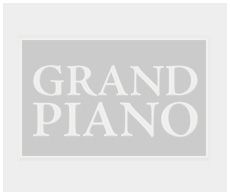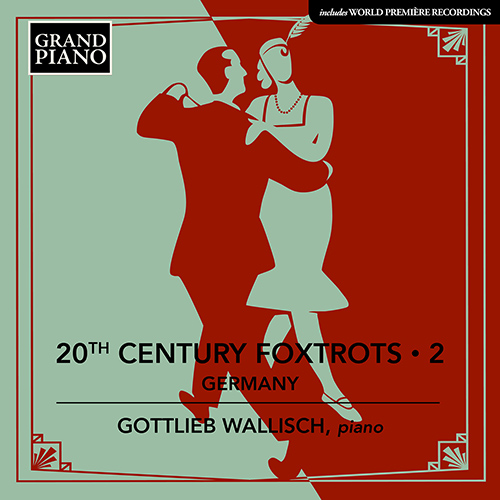
Walter Gieseking (1895 - 1956)
Gieseking’s father was a distinguished German doctor. His son Walter spent the first sixteen years of his life in southern France and Italy as Gieseking senior combined the practice of medicine with his interest in entomology. Although Gieseking played the piano from the age of four, he had no proper tuition until his family moved to Hanover in 1911. Here, aged sixteen, he became a pupil of Karl Leimer at the Hanover Conservatory where he remained for three years, after which he had no further tuition. At the age of twenty Gieseking performed the complete Beethoven piano sonatas in six recitals; and although World War I interrupted the beginnings of his career, in 1920 at one of his seven recitals in Berlin that season, he played music by Debussy and Ravel, composers with whom he would be associated throughout his life. (Interestingly, Gieseking was hailed as ‘the new Anton Rubinstein’, a title which would hardly have been applied to the Gieseking of the 1950s.) Debuts followed in London, America and Paris during the 1920s, and during the 1930s Gieseking spent much of his time touring Europe, America and South America.
Although Gieseking was in America in 1939, he decided to return to Germany at the outbreak of World War II. Because he gave many concerts in Germany during the time of the Nazi regime (and stopped playing Debussy and Ravel), Gieseking was seen to be a Nazi sympathiser although he was never a member of the Nazi Party. However, by 1947 he was playing in Paris and the following year played in London, although America was not so keen to welcome him and he was not able to return there until 1953. During these years he also played in Australia, Japan and South America. In 1946, Gieseking formed a trio with violinist Gerhard Taschner and cellist Ludwig Hoelscher and from 1947 he gave master-classes at the Musikhochschule in Saarbrücken. During 1955 Gieseking and his wife were passengers on a bus that was involved in an accident; his wife was killed and Gieseking suffered serious head injuries. Despite this, three months later he embarked on a ten-month tour of America, and in the autumn of 1956 undertook a series of recording sessions in London. He broadcast for the BBC on 29 September 1956 but died less than a month later.
Gieseking was an incredible sight-reader and had a photographic memory. He is renowned today for his interpretations of Debussy and Ravel, for his impressionistic washes of sound and colour, and particularly for his finely graded sounds from piano to the barely audible. He did, however, have a wide repertoire that included concertos by Tchaikovsky and Rachmaninov, piano sonatas by Scriabin, and works by Schumann, Beethoven, Mozart and Bach. Gieseking also played a great deal of contemporary music by composers such as Busoni, Hindemith, Korngold, Krenek, Poulenc, Pfitzner, Schoenberg and Stravinsky, many of whom dedicated works to him. At his London debut in October 1923 he played Bach’s English Suite in D minor, Scriabin’s Piano Sonata No. 4 Op. 30, and Schumann’s Waldszenen Op. 82, although a critic at the time complained that the programme, ‘chiefly of small movements’, offered no opportunity of testing Gieseking’s interpretative powers. However all the attributes admired in his recordings of Debussy and Ravel were evident back in 1923. ‘Mr Gieseking’s skill is great enough in some ways… and his pianissimo now and then becomes as nearly nothing as is possible to imagine… The Bach was played with perfect clarity and his tone gradations here and in the Debussy pieces were masterly.’
Gieseking made acoustic recordings for the Homochord label, and early electric recordings for the Odéon group including a fine arrangement by himself of Richard Strauss’s song Ständchen. During the 1930s he recorded for Columbia and from this period come fine performances of Liszt’s Piano Concerto No. 1 in E flat with Henry Wood and concertos by Beethoven and Grieg, all reissued on compact disc by Naxos.
His famous interpretations of Debussy and Ravel were recorded by Gieseking in the late 1930s on 78rpm discs, but it is the later recordings (on tape) that are justly renowned. Between 1951 and 1955 he recorded the complete works of Debussy and in 1956 those of Ravel. Also for EMI, in 1953 he recorded the complete solo piano music of Mozart (reissued on eight compact discs), but these recordings have not received such unanimous praise as those of French music. The criticism generally levelled at Gieseking’s Mozart is that it is too finely chiselled and precise, with the pianist treating the composer as a miniaturist; and it is true that Gieseking can make Mozart’s works sound like one of his butterflies pinned to a board (a hobby he inherited from his father). In September of 1956 Gieseking recorded a selection of nearly forty of Grieg’s Lyric Pieces and seventeen of Mendelssohn’s Lieder ohne Worte; and the previous year he recorded a chamber work, Mozart’s Quintet in E flat K. 452, with the Philharmonia Wind Quartet.
At the time of his death, Gieseking was also recording all the Beethoven sonatas and some Schubert for EMI. Those who think of Gieseking only in the French Impressionists should hear his hair-raising live performances of Scriabin’s Piano Sonata No. 5 Op. 53 and Rachmaninov’s Piano Concertos Nos 2 and 3 conducted by Willem Mengelberg. The Scriabin is given an overwhelming performance, with Gieseking concentrating so much on the impetuosity, excitement and ecstasy of the work that some of the climaxes have a few dropped notes. It is a small price to pay for such an incandescent performance. The Rachmaninov concertos were recorded during live performances with the Concertgebouw Orchestra and Willem Mengelberg in 1940. As in the Scriabin live performance, Gieseking is impetuous, sometimes at the expense of accuracy, but the excitement generated by the performance is overwhelming. At the end of the third movement cadenza of the Concerto No. 2, Gieseking gets so excited that he ends it with a glissando.
As an adjunct to Gieseking’s famous EMI recordings of Debussy and Ravel, a disc of BBC broadcasts contains works by both these composers recorded less than a month before his death, as well as a performance of Schumann’s Kreisleriana Op. 16 from 1953.
Gieseking will always remain as one of the best interpreters of French Impressionistic piano music, but as a pianist and musician his range and scope was far wider, and his repertoire more comprehensive.


 Grand Piano has gained a reputation for producing high quality recordings of rare keyboard gems. Dedicated to the exploration of undiscovered piano repertoire, the label specialises in complete cycles of piano works by many lesser-known composers, whose output might otherwise have remained unknown and unrecorded.
Grand Piano has gained a reputation for producing high quality recordings of rare keyboard gems. Dedicated to the exploration of undiscovered piano repertoire, the label specialises in complete cycles of piano works by many lesser-known composers, whose output might otherwise have remained unknown and unrecorded.






